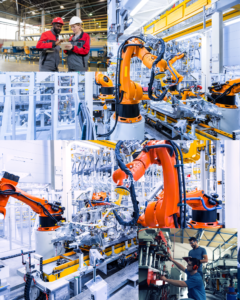Manufacturers need to plan for the future
Posted by Vipin Singh on
 According to the National Association of Manufacturers, manufacturing accounts for about 11% of the US economy and supports nearly 12 million jobs. Despite declining manufacturing jobs in recent years, manufacturing output in the US has remained strong. US manufacturing output reached an all-time high in 2019 before the COVID-19 pandemic caused disruptions to global supply chains. The industry has rebounded since the COVID-19 pandemic, with many manufacturers adapting to the new normal of remote work and increased safety protocols.
According to the National Association of Manufacturers, manufacturing accounts for about 11% of the US economy and supports nearly 12 million jobs. Despite declining manufacturing jobs in recent years, manufacturing output in the US has remained strong. US manufacturing output reached an all-time high in 2019 before the COVID-19 pandemic caused disruptions to global supply chains. The industry has rebounded since the COVID-19 pandemic, with many manufacturers adapting to the new normal of remote work and increased safety protocols.
Many manufacturers struggle to attract skilled workers to the industry. This is partly due to a perception that manufacturing jobs are dirty and low paying, which is not always true. The COVID-19 pandemic exposed the risks of relying on global supply chains, leading to a growing trend towards reshoring manufacturing to the US. This trend is expected to continue in the coming years.
Technology is transforming manufacturing with automation, robotics, and artificial intelligence advancements. This increases efficiency and productivity and requires manufacturers to adapt to new working methods.
In terms of planning for the future and transitioning ownership, several strategies can help manufacturing business owners understand how to build and sell or transfer a business for maximum value:
- Develop a clear understanding of the business: Before a business owner can sell their manufacturing business for maximum value, they must understand the business deeply. This includes understanding the business’s financials, operations, and market position.
- Focus on growth and profitability: Buyers typically seek growing and profitable businesses. As a result, manufacturing business owners should focus on increasing revenue and profitability by developing new products, expanding into new markets, and improving operational efficiency.
- Build a strong management team: Buyers want to see that a manufacturing business can thrive even after the current owner leaves. A strong management team is key to ensuring that the business can continue to operate successfully.
- Invest in technology and equipment: Manufacturing businesses that have invested in the latest technology and equipment are more attractive to buyers. This is because these businesses are more efficient, which leads to higher profitability.
- Prepare for the sale: Selling a business can be a complex process. Manufacturing business owners should work with experienced professionals, such as attorneys and accountants, to ensure they are prepared for the sale. This includes preparing financial statements, legal documents, and other important paperwork.
- Find the right buyer: Not all buyers are created equal. Manufacturing business owners should work with a business broker or M&A advisor to identify the right buyer for their business. This includes identifying buyers with industry experience willing to pay a premium for the business.
- Get help from experienced professionals to negotiate effectively: The sale of a manufacturing business often involves complex negotiations. Business owners should work with experienced professionals to negotiate effectively and get the best possible deal for their business.
By following these strategies, manufacturing business owners can build and sell their businesses for maximum value.

